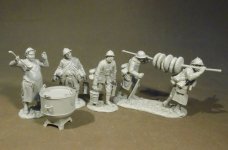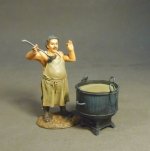THE GREAT WAR 1914-1918
WHEELS ACROSS THE DESERT
In 1915, Egypt was the centre of the war effort in the near East. Units would strike westwards into the Sahara desert to deal with dissident tribes who were goaded into action by the Turks, or were sent northwards into Gaza to confront the Turkish army itself.
The Sennussi were a warlike Arab religious sect encouraged by the Turks to tie down as many British troops as possible. Model T Ford cars, escorted by Rolls- Royce armoured cars were used to patrol the desert, and to launch daring raids against the Sennussi.
The most important British armoured car of the first World War was undoubtedly the Rolls-Royce. In terms of the numbers built, effective design and all round quality it was unequalled, and is now taken to typify the vintage armoured car.
The Hedjaz Armoured Car Section, was an unit of three Rolls Royce armoured cars, which operated alongside the irregular forces inspired and guided by T.E Lawrence. This unit also acted independently and mounted long range raids, such as the succesful raid against the Amman railway bridge in September 1918.
The armoured cars earned Lawrence’s respect for their reliability and effectiveness, and in his “Seven Pillars of Wisdom” he mentions that “a Rolls in the desert was above rubies”.
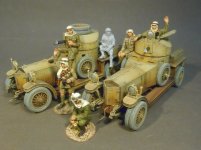
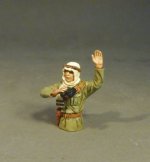
WAD-02A
WHEELS ACROSS THE DESERT,
THE HEDJAZ ARMOURED CAR SECTION,
ROLLS ROYCE ARMOURED CAR,
ARMOURED CAR COMMANDER,
(1pc)
THE GALLIPOLI CAMPAIGN 1915
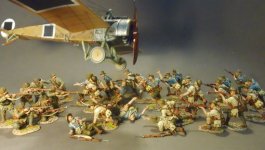
With World War I stalled on the Western Front by 1915, the Allied Powers were debating going on the offensive in another region of the conflict, rather than continuing with attacks in Belgium and France. Early that year, Russia’s Grand Duke Nicholas appealed to Britain for aid in confronting a Turkish invasion in the Caucasus. (The Ottoman Empire had entered World War I on the side of the Central Powers, Germany and Austria-Hungary, by November 1914.) In response, the Allies decided to launch a naval expedition to seize the Dardanelles Straits, a narrow passage connecting the Aegean Sea to the Sea of Marmara in northwestern Turkey. If successful, capture of the straits would allow the Allies to link up with the Russians in the Black Sea, where they could work together to knock Turkey out of the war.
The Gallipoli Campaign of 1915-16, also known as the Battle of Gallipoli or the Dardanelles Campaign, was an unsuccessful attempt by the Allied Powers to control the sea route from Europe to Russia during World War I. The campaign began with a failed naval attack by British and French ships on the Dardanelles Straits in February-March 1915 and continued with a major land invasion of the Gallipoli Peninsula on April 25, involving British and French troops as well as divisions of the Australian and New Zealand Army Corps (ANZAC). Lack of sufficient intelligence and knowledge of the terrain, along with a fierce Turkish resistance, hampered the success of the invasion. By mid-October, Allied forces had suffered heavy casualties and had made little headway from their initial landing sites. Evacuation began in December 1915, and was completed early the following January.
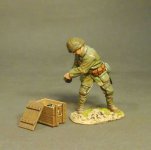
GLT-09
THE GREAT WAR, 1914-1918,
THE GALLIPOLI CAMPAIGN 1915,
Ottoman with Grenades,
(3pcs)
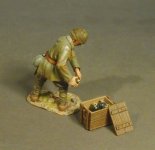
More to follow.......................................


